Challenging a binary neutron star merger interpretation of GW230529
Currently under a review

GW230529 represented the first gravitational-wave detection with one of the component objects’ mass inferred to lie in the previously hypothesized mass gap between the heaviest neutron stars and the lightest observed black holes. Given the expected maximum mass values for neutron stars, this object was identified as a black hole, and, with the secondary component being a neutron star, the detection was classified as a neutron star-black hole merger. However, due to the low signal-to-noise ratio and the known waveform degeneracy between the spin and mass ratio in the employed gravitational-wave models, GW230529 could also be interpreted as a merger of two heavy (\(\gtrsim 2 \mathrm{M}_\odot\)) neutron stars with high spins. We investigate the distinguishability of these scenarios by performing parameter estimation on simulated signals obtained from numerical-relativity waveforms for both neutron star-black hole and binary neutron star systems, with parameters consistent with GW230529, and comparing them to the analysis of the real event data. We find that GW230529 is more likely to have originated from a neutron star-black hole merger, though the possibility of a binary neutron star origin can not be ruled out. Moreover, we use the simulation data to estimate the signatures of potential electromagnetic counterparts emitted by the systems, but we find them to be too dim to be located by current wide-field surveys.